The overwintered ‘Red Russian’ kale has been a real treat this spring—sweet, tender and delicious. Unfortunately it’s already begun to bolt (go to seed), which means that the kale will gradually get tougher and more bitter as its energy goes into reproduction.
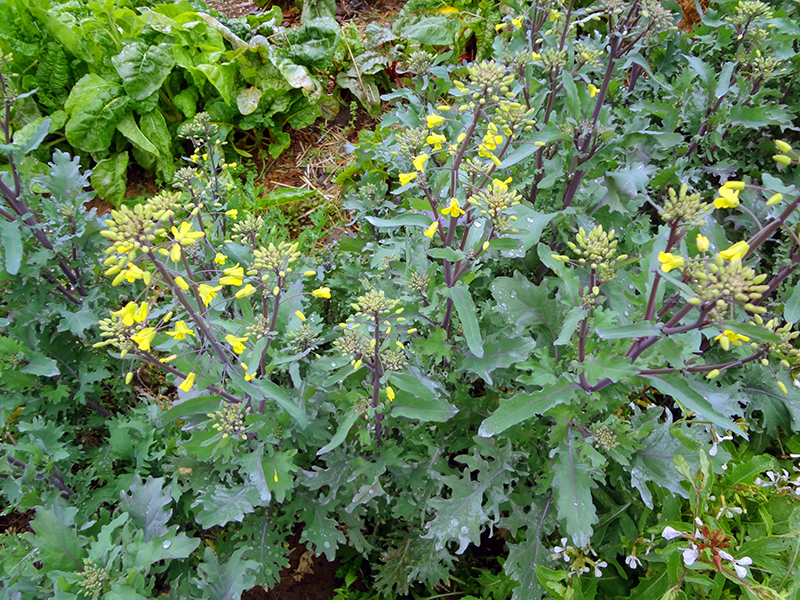
I’ve been harvesting kale almost every day, and the other night I cut off the flower heads to try to slow the bolting process. I nibbled on some of the flower heads and found them delicious. Further down the stem was edible and tasty as well, with a texture like very thin asparagus.
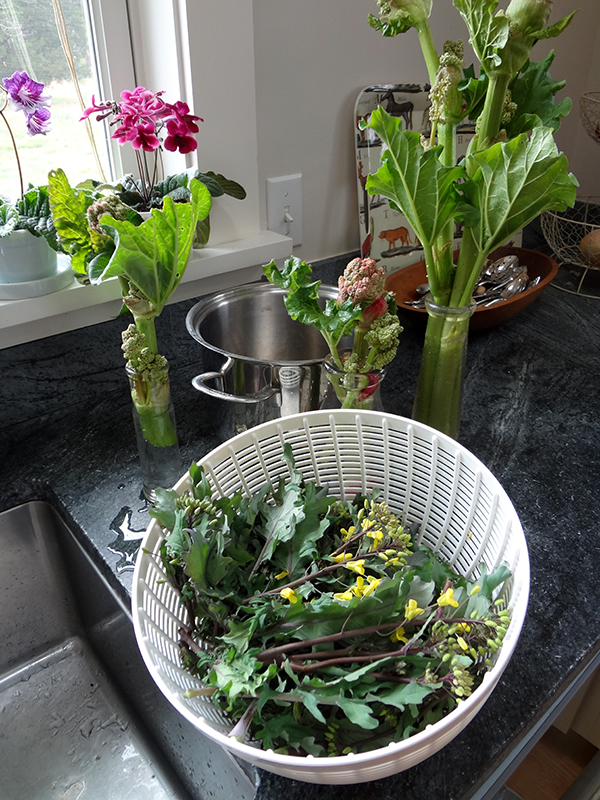
I washed the flowering heads and gave them a rough chop. They went into a saute pan with olive oil, a clove of chopped garlic, and a few golden raisins. A few seconds on high heat cooked them to perfection, just wilted through but still vibrant, healthful green.
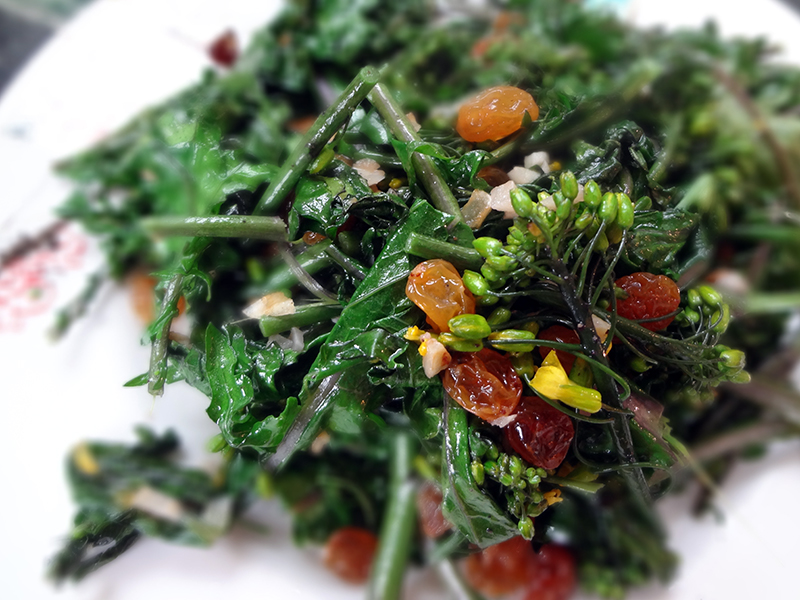
I’m pretty sure that as the season goes on these flowering heads won’t be nearly as delicious, but if you can catch them in these first days of spring you’ll enjoy an unusual treat.
Last fall I had grand ideas of building a cold frame to overwinter spinach, kale, chard, and salad greens. In late October, right before the first frost, I stuffed 18 strawbales in the bed of the pickup and when I got home used them to build a small fortress around some rows of greens that I’d sowed earlier in the fall.
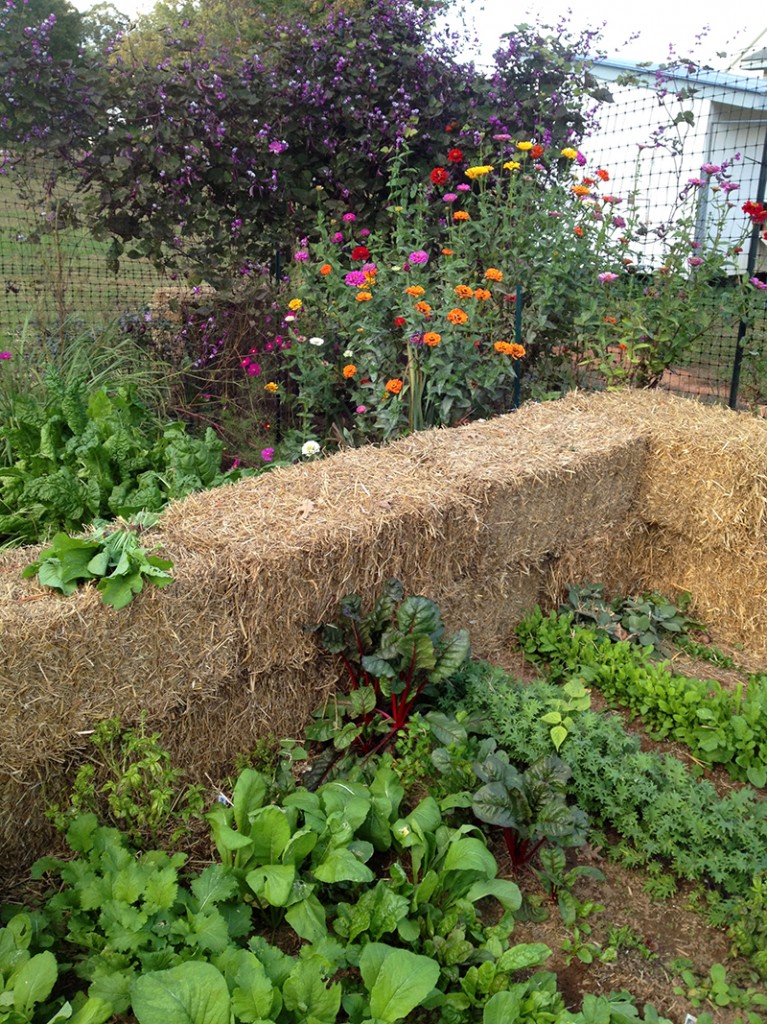 October 22, 2013
October 22, 2013
I made a one-and-a-half-story, south-facing design thinking that the angle would help trap the sun’s heat and shed water off the big sheet of contractor’s plastic that I draped over the top for a lid. I secured the plastic on top of the bales with some scrap lumber, bricks, and cinder blocks. It was admittedly a hot mess to look at, but that’s one reason that I hid the veg garden out of sight from the house and road!
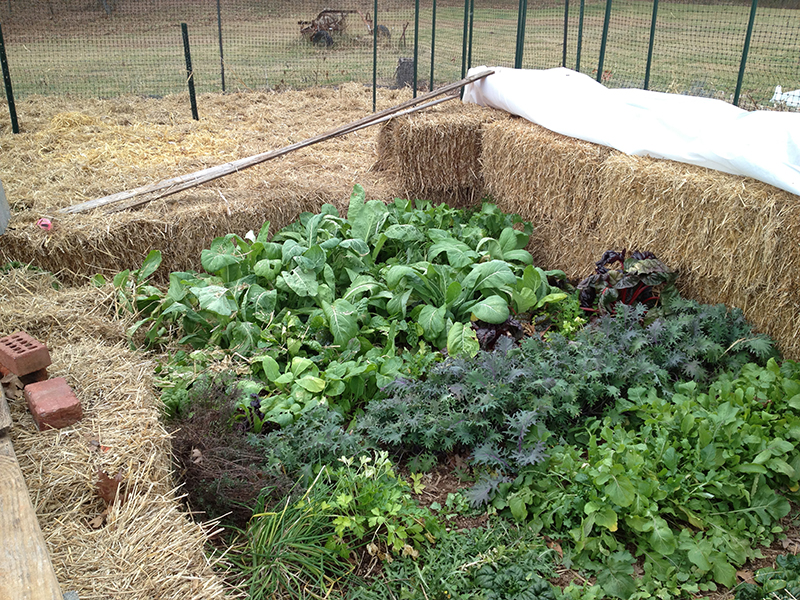 December 5, 2013
December 5, 2013
Things looked good into December, and I kept harvesting greens. But then it started to get really cold and going out to the garden to wrestle with frozen plastic and the icebergs caught in its folds didn’t appeal. So I abandoned the cold frame to the savages of this very long, cold, and snowy winter.
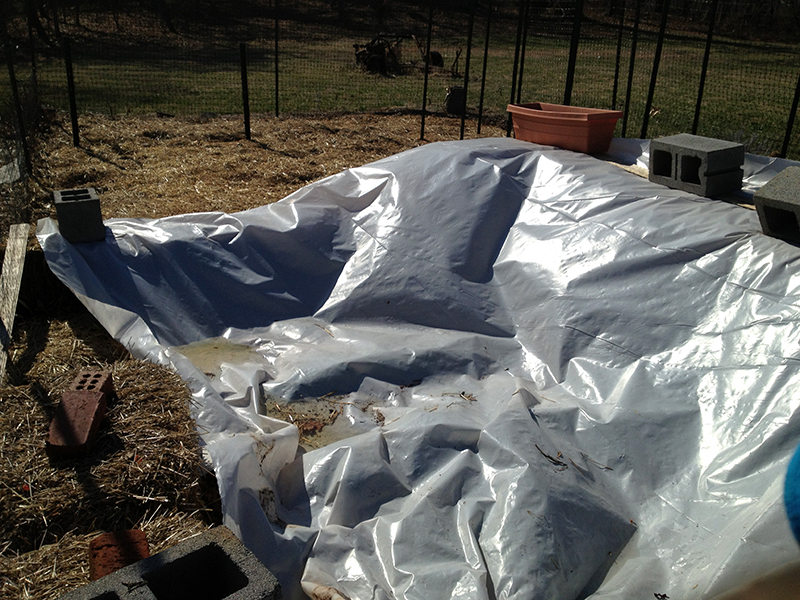
Today I thought I would peek under the plastic, and I was surprised to find quite a few plants happily growing. There were vigorous-looking weeds starting to set seed, though outside the protection of the cold frame none of these weeds are growing yet anywhere on the property—proof that I was successful at creating a little warm microclimate! I was pleased to see chicory, which is called a weed but is actually a very healthy edible spring tonic that you can add to your salad. The Red Russian kale looked pretty good, as did the spinach, and the arugula was flowering. The chard and mustard didn’t make it through as well.
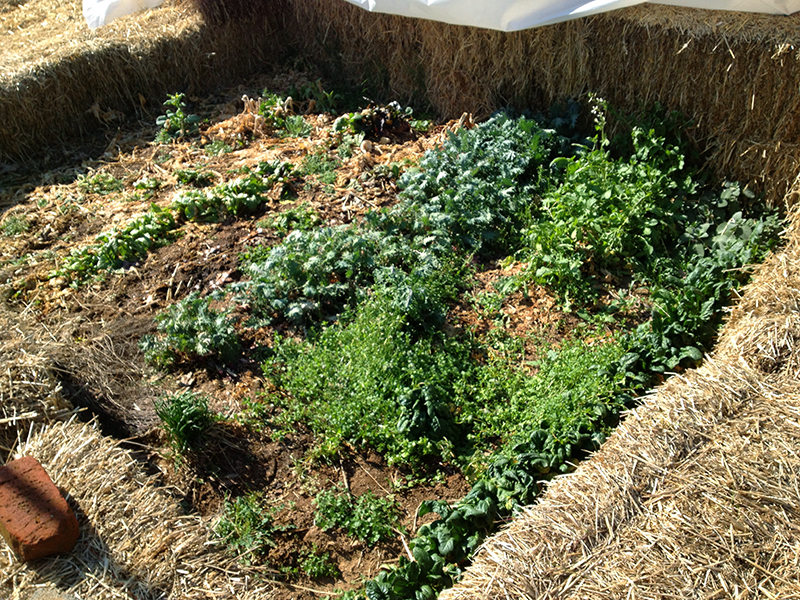 March 24, 2014
March 24, 2014
This is a happy discovery as these little plants, which have existed in suspended animation over the winter, mean a jump on the spring growing season—saving weeks of waiting for spring-sown seed to germinate in cold soil. These plants are undoubtedly strong beneath the surface, and all they will need to get up and growing is some more heat and water. After we get through this week—with more cold temps and even possible snow tomorrow—I will start opening the top of the cold frame for short spells to get the plants used to the temperatures and sun.
When it comes time to plant the whole garden, I will spread the nicely aged straw in these bales around the garden as part of my deep mulching soil-conditioning and weed-suppressing strategy.
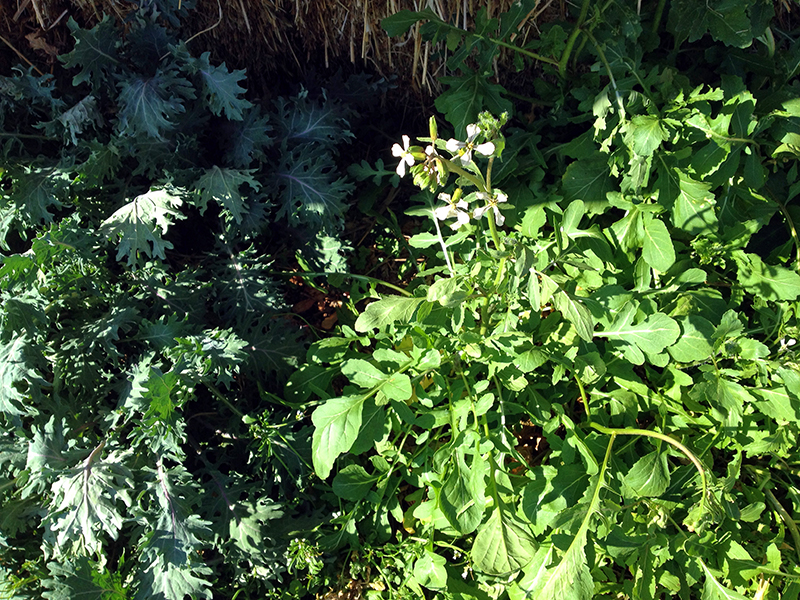
I will still probably sow some more greens from seed, just to experiment, but while I wait I will be enjoying winter-sweetened greens that amazingly hung in there through multiple polar vortices, being flattened under 16″ of snow, and everything else this winter threw at them.
I am pretty happy that what I thought was a failed experiment at getting greens to grow all winter actually isn’t a total failure. I maybe wasn’t eating lush garden-grown salad in the deepest part of winter, but I can right now, and I probably could have weeks ago had I just peeked under the plastic!
I know I am way overdue with a vegetable garden update. In fact, I haven’t even posted much of anything about the veg garden this whole spring, even though I started working in there in March. The ensuing three months were taken up with gardening, not writing about gardening, so that means we will just jump right into a lush summer garden and skip all the photos of bare spring dirt.
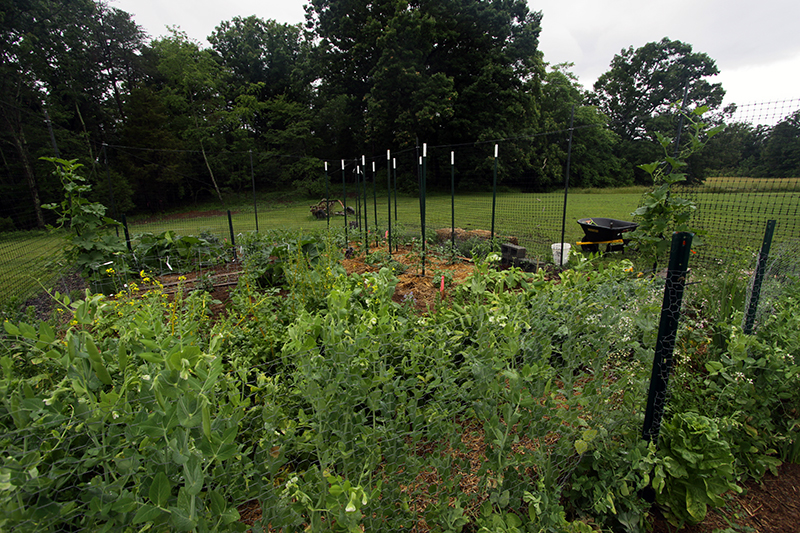
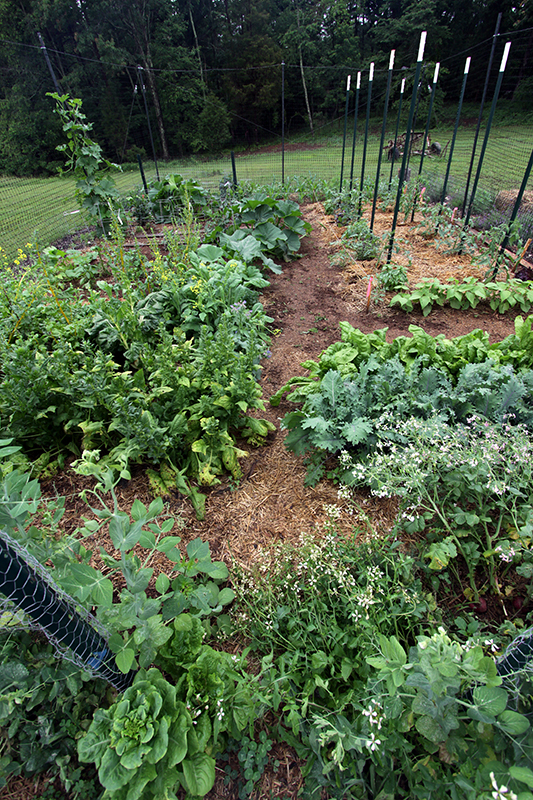
Starting in the foreground of the shot above, I have various lettuces and flowering arugula growing around the sugar snap pea. supports. Then, up the right side of the path are a row of zinnias, the peas, flowering radishes, Red Russian kale, Lucullus Swiss Chard, some dill, and the entry path. Then come some Dragon’s Tongue beans, then my patch of 11 tomatoes underplanted with various basils, a row of mixed wax, green and purple beans, and finally my Glass Gem corn. Up along the fence on the right side are sunflower and cosmos seedlings, and tucked here and there are tomotillos, hyacinth beans, poppies, and a volunteer squash.
Up the left side of the path are, out of view of this photo, sweet peas at the fence, Victoria rhubarb, another row of zinnias, more sweet peast, radishes, then overwintered spinach that’s about to be ripped out and replanted, cilantro, parsley, borage, thyme, a row of red Swiss Chard, overwintered bok choy and yellow chard, blueberries, strawberries, then a row of mustard, followed by rows of arugula and mache. Then some rogue ruffled kale seedlings, and about eight pepper plants. After that we get into the dahlia forest, interplanted with rows of zinnias, followed by the cucumber trellis, a squash, then even more dahlias, nasturtium seedlings, and my mint patch. Whew!
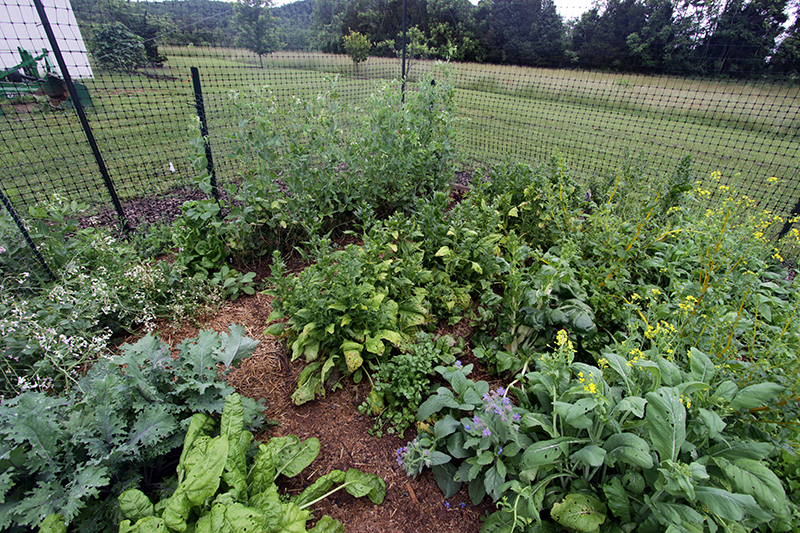
Let’s get closer. Up above are the various greens. The blue flowering plants are borage, and the mustard is blooming yellow. The radishes on the left have beutiful light pink flowers, and they’ve made “radish beans.”
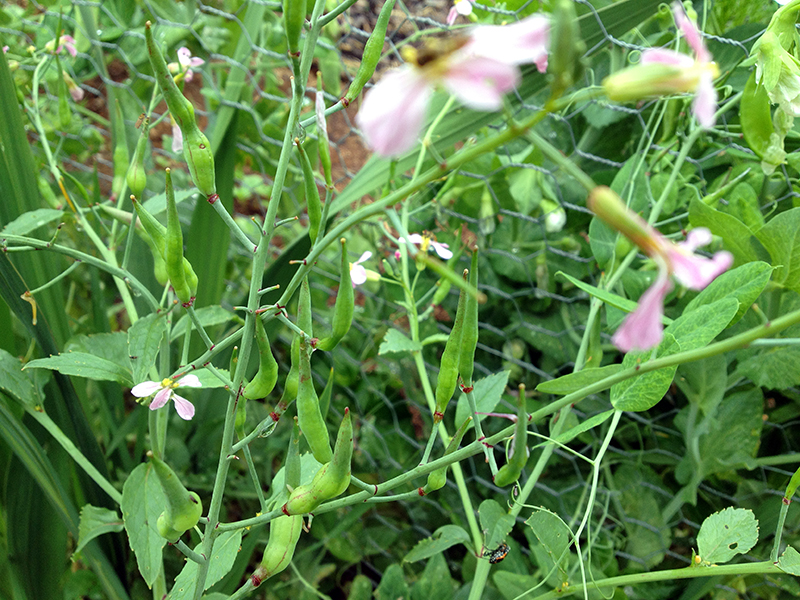
These radish seed pods are actually more delicious, to me, than the radishes. I am glad I let this crop go to seed and discovered a new treat.
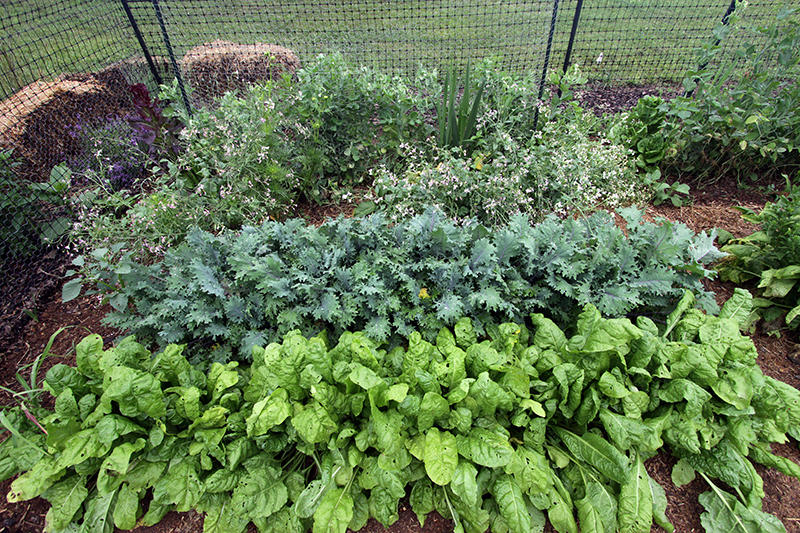
From the top: Peas, radishes, Red Russian Kale, Lucullus Swiss Chard
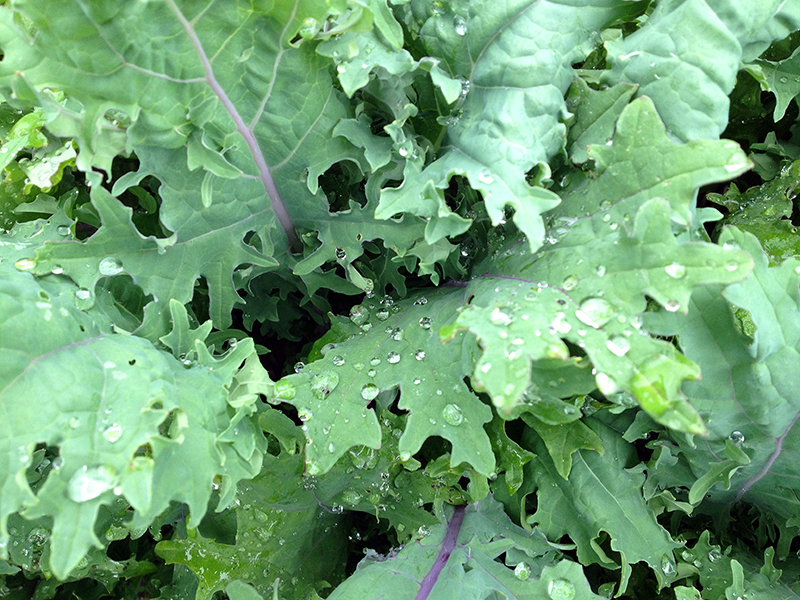
I find Red Russian kale to be one of the most beautiful plants I grow. Every thing about it, from the shape of the leaves to their color, pleases me. Last year my first seeding was preyed on by some sort of stink bug, but this year that bug has held off long enough for me to get a few leaves of my own. I suspect that it will only be a matter of time until the kale falls victim to some other bug, though. Such is the nature of (my) organic garden.
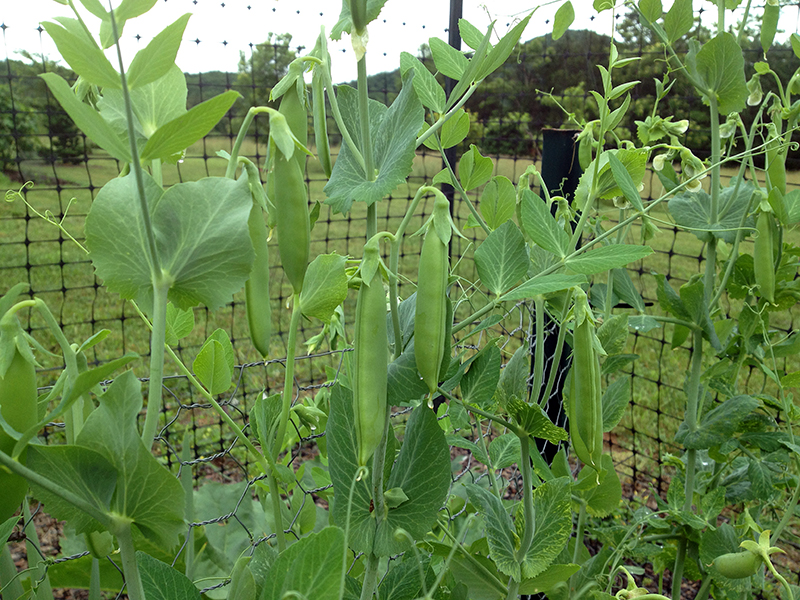
The snow peas are finally coming on. I am puzzled by snowpeas. The seed packets say to sow here in February or March. Well, February just seemed brutal to try to get something to grow, so I waited and sowed in March. It was a month before seedlings emerged. I didn’t get a great germination rate (they were old seeds), so I interplanted with new seedlings in April. These newer plants quickly caught up to the earlier-seeded siblings, just as of of my favorite gardening books said they would. I think this spring’s weather, which has alternated between highs in the mid-90s and being downright chilly, has the peas in a tizzy. I’ll be lucky to get a few delicious handfuls, and that will be it before I rip them out to plant something else. Central VA just doesn’t have the climate for growing these cool-season crops.
Up next: the rest of the garden…















